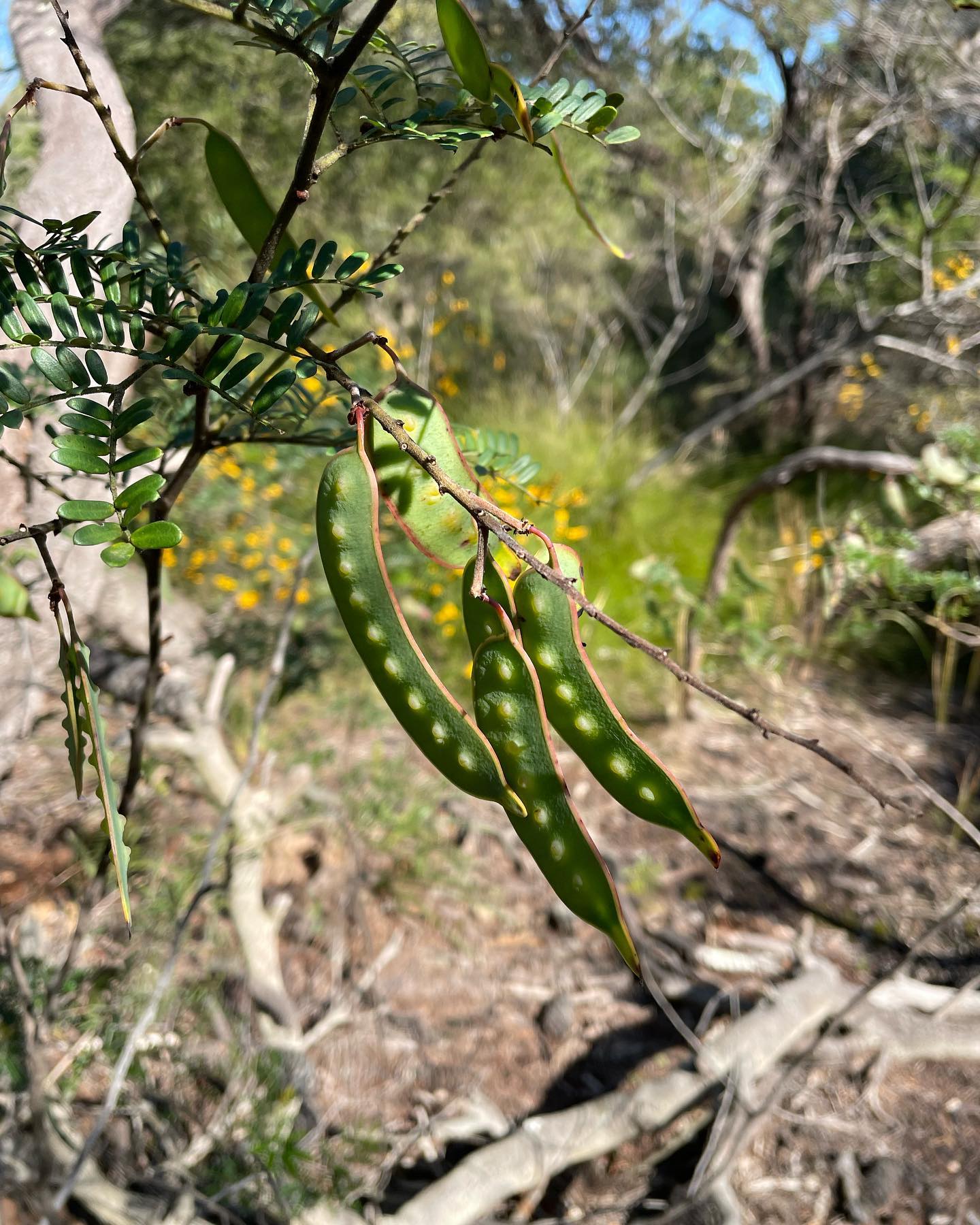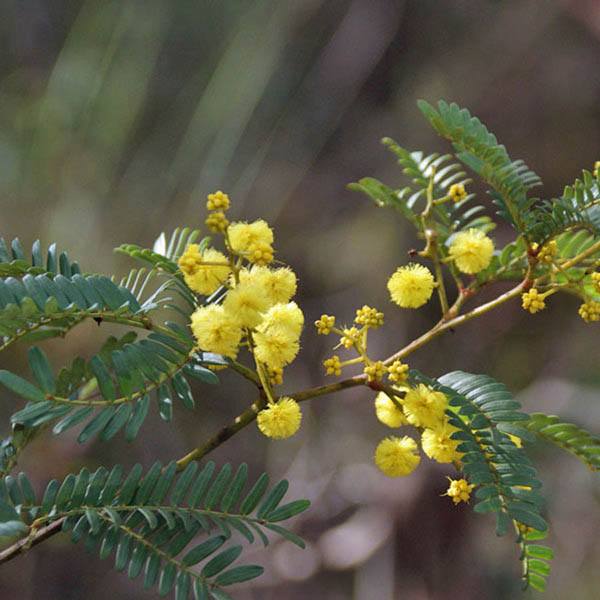
Acacia Terminalis
Common name: Sunshine Wattle
I grow best: Shrub up to 3m
• Attracts birds, native bees and invertebrate creators
• Flowers March to October
• Well drained or sandy soils
• Cultural uses
• Eastern Suburb Banksia Scrub
Looks like: Dense shrub to 3 m with 2 m spread. Dark green pinnate leaves. Bears cream to deep yellow ball-flowers in autumn and winter. This Acacia makes an excellent choice for the flower garden, as it has an unusually long flowering time through the colder months. It is well named, as it brings a bit of sunshine to gardens in the cooler months. The foliage is also attractive when not in flower, being bipinnate which gives it a fern-like look.
Habitat & Growing: Native to the eastern states of Australia, it grows to a shrub or small tree with an open habit and will grow easily in a range of conditions. Flower colour varies considerably, from very pale to vibrant yellow. Found in NSW, Victoria and Tasmania. It is common in the bushland surrounding Sydney and occurs from Northern NSW down the east coast into Tasmania.
Propagation: From scarified seed or boiling water treatment.
Cultivation: Generally adaptable in cultivation, responds to sunny, reasonably well drained positions in most soils. Hardy plant which flowers during the off-season. Seed should be collected from populations with bright yellow flowers. Good for hydroseeding. Suitable for areas of low maintenance (eg. road batters) that is frost hardy (will tolerate frosts to -7 C ). Suitable hedge or screen plant. It is a low maintenance plant, likes a sunny and fairly well drained position, and can adapt to most soils. Can be pruned to promote a denser habitat. A good pioneer plant for new gardens as it grows quickly and gives some shelter to your slower growing shrubs and trees. One note of caution, it can be subject to borers which can make it a short lived plant.
| Family | Fabaceae |
| Plant Type | Small tree, Small shrub, Large shrub |
| Width | 1.5 |
| Flowering Time | Spring, Autumn, Winter |
| Soil Type | Sandy, Loamy, Sandy loam, Clay loam, Potting mix, Poor soil |
| Climate Zone | Warm temperate, Cool temperate, Mediterranean, Cool |
| Growth Habitat | Evergreen, Open foliage, Spreading |
| Soil Moisture | Well-drained, Moist moderate drainage |
| Special Uses | Erosion control, Fast growing |
| Height | 6 |
| Flower Colour | Cream, Yellow |
| pH Level | Acid, Neutral, Alkaline |
| Plant Environment | Low maintenance garden, Flower garden, Coastal garden, Drought resistant |
| Light | Sunny, Light shade |
| Lifespan | Perennial, Short lived |
| Frost Tolerance | Tolerates light frost |
| Attracts Wildlife | Bees, Seed eating birds, Butterflies, Other insects |
Distribution:

Traditional uses: The seeds of a large number of wattle species are edible and may be harvested for grinding into a flour, for the production of bread, or an edible paste. The plant is valued as a source of food, medicine and for the quality of its timber, used in the production of a range of tools and weapons. Inclusive of boomerangs, spear throwers, spears, digging sticks, parrying shields and clubs. The gum of a number of wattle varieties is edible, with the flavour akin to that of a mild sugary sweetness, which can become unpalatable when offset by high amounts of the plant’s tannin. The gum in some cases was utilised in the production of a drink, which served as remedy to coughs, colds and chest infections. Gum could also be applied directly to cuts and abrasions as an antiseptic preparation, either in a solid or powdered form.
Eco Friendly Seed Starting Kit: Propagation Instructions
1.Boil water and place in a bowl to soak the seed overnight.
2.Once ready to sow the seed, place coir tablet in a container with warm water.
3.Once the coir tablet has expanded, pour excess water out of the container and transfer the coir into the peat pot.
4.Place seeds in pot and cover lightly with the coir.
5.Keep in a sheltered position where it can receive morning sun, gradually exposing to full sun.
6.Keep moist until germination.
7.Once seed is germinated, you can plant in next size pot or plant in your garden.
8.Ensure pot is under soil level, push down gently and water well.

